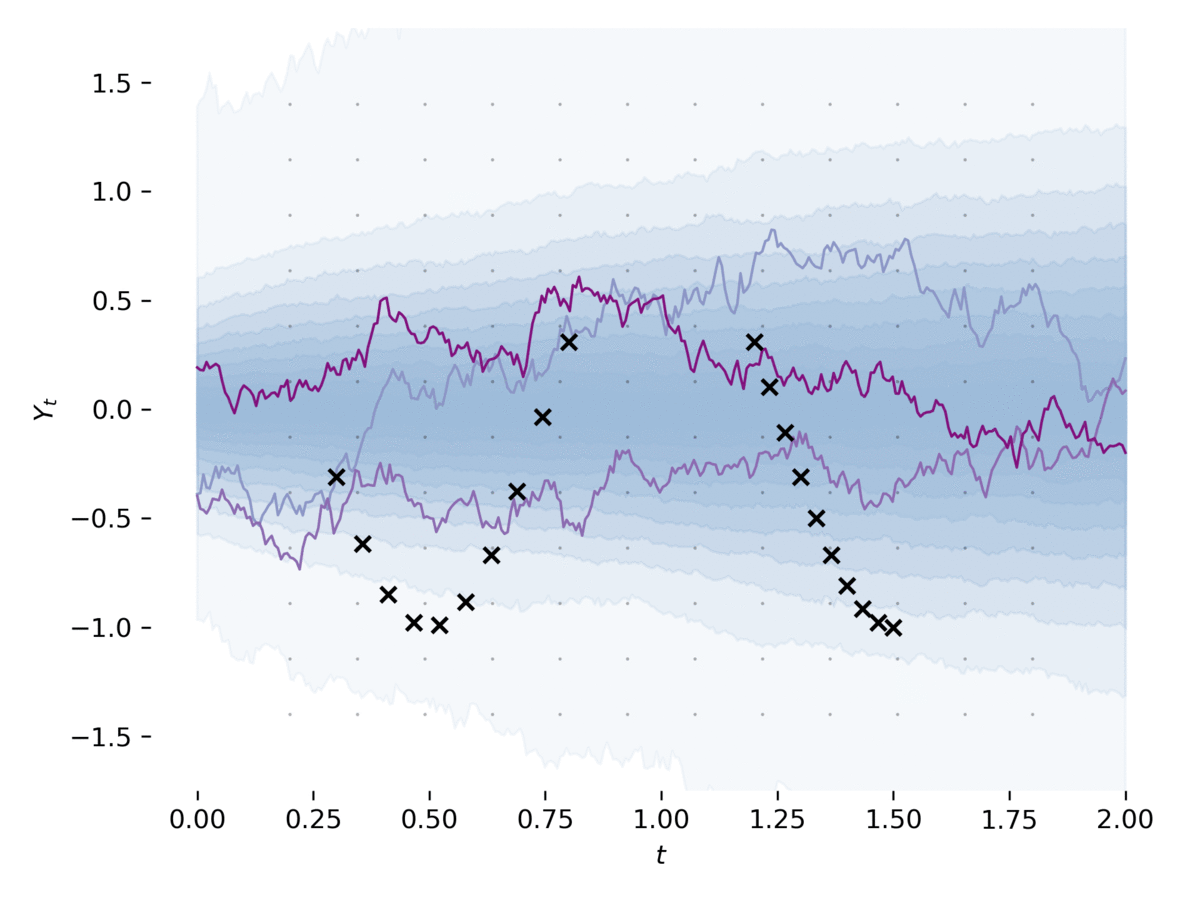This library provides stochastic differential equation (SDE) solvers with GPU support and efficient backpropagation.
pip install torchsdeRequirements: Python >=3.6 and PyTorch >=1.6.0.
Available here.
import torch
import torchsde
batch_size, state_size, brownian_size = 32, 3, 2
t_size = 20
class SDE(torch.nn.Module):
noise_type = 'general'
sde_type = 'ito'
def __init__(self):
super().__init__()
self.mu = torch.nn.Linear(state_size,
state_size)
self.sigma = torch.nn.Linear(state_size,
state_size * brownian_size)
# Drift
def f(self, t, y):
return self.mu(y) # shape (batch_size, state_size)
# Diffusion
def g(self, t, y):
return self.sigma(y).view(batch_size,
state_size,
brownian_size)
sde = SDE()
y0 = torch.full((batch_size, state_size), 0.1)
ts = torch.linspace(0, 1, t_size)
# Initial state y0, the SDE is solved over the interval [ts[0], ts[-1]].
# ys will have shape (t_size, batch_size, state_size)
ys = torchsde.sdeint(sde, y0, ts)examples/demo.ipynb gives a short guide on how to solve SDEs, including subtle points such as fixing the randomness in the solver and the choice of noise types.
examples/latent_sde.py learns a latent stochastic differential equation, as in Section 5 of [1].
The example fits an SDE to data, whilst regularizing it to be like an Ornstein-Uhlenbeck prior process.
The model can be loosely viewed as a variational autoencoder with its prior and approximate posterior being SDEs. This example can be run via
python -m examples.latent_sde --train-dir <TRAIN_DIR>The program outputs figures to the path specified by <TRAIN_DIR>.
Training should stabilize after 500 iterations with the default hyperparameters.
examples/sde_gan.py learns an SDE as a GAN, as in [2], [3]. The example trains an SDE as the generator of a GAN, whilst using a neural CDE [4] as the discriminator. This example can be run via
python -m examples.sde_ganIf you found this codebase useful in your research, please consider citing either or both of:
@article{li2020scalable,
title={Scalable gradients for stochastic differential equations},
author={Li, Xuechen and Wong, Ting-Kam Leonard and Chen, Ricky T. Q. and Duvenaud, David},
journal={International Conference on Artificial Intelligence and Statistics},
year={2020}
}
@article{kidger2021neuralsde,
title={Neural {SDE}s as {I}nfinite-{D}imensional {GAN}s},
author={Kidger, Patrick and Foster, James and Li, Xuechen and Oberhauser, Harald and Lyons, Terry},
journal={International Conference on Machine Learning},
year={2021}
}
[1] Xuechen Li, Ting-Kam Leonard Wong, Ricky T. Q. Chen, David Duvenaud. "Scalable Gradients for Stochastic Differential Equations". International Conference on Artificial Intelligence and Statistics. 2020. [arXiv]
[2] Patrick Kidger, James Foster, Xuechen Li, Harald Oberhauser, Terry Lyons. "Neural SDEs as Infinite-Dimensional GANs". International Conference on Machine Learning 2021. [arXiv]
[3] Patrick Kidger, James Foster, Xuechen Li, Terry Lyons. "Efficient and Accurate Gradients for Neural SDEs". 2021. [arXiv]
[4] Patrick Kidger, James Morrill, James Foster, Terry Lyons, "Neural Controlled Differential Equations for Irregular Time Series". Neural Information Processing Systems 2020. [arXiv]
This is a research project, not an official Google product.
